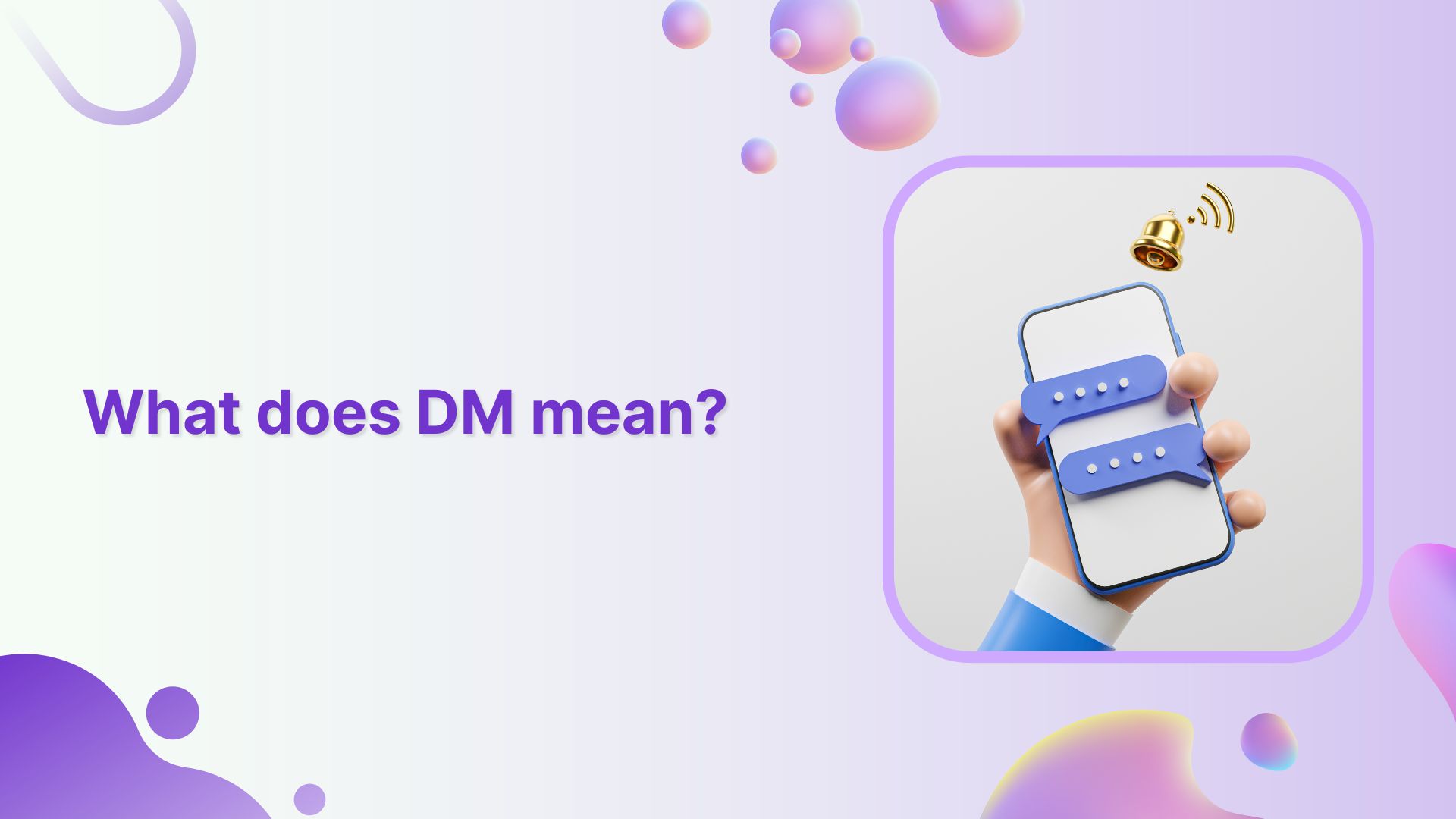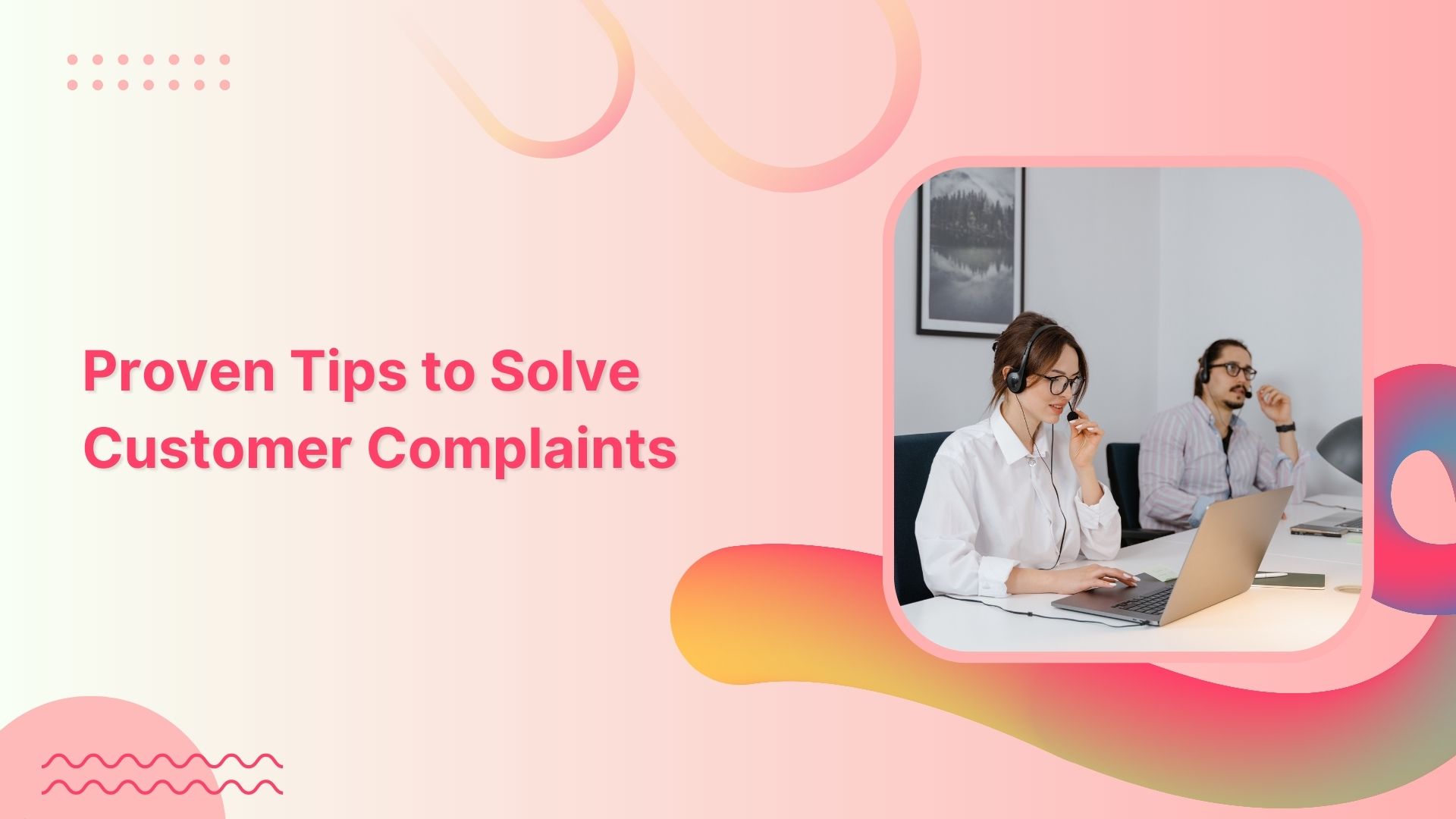Exciting news! Contentpen is live -Join todayand grab 50% off on annual plan. Limited slots only 🎊
How to Positively Handle Negative Comments on Social Media?

Social media has proven to be a great medium that serves as the voice of the customer. But it can also lead to negative comments on social media. Even if a business is not active on social media, your customers likely are. No matter if you’re a participant or not, your business is being discussed and represented somehow.
The good news is that customers often use social media to interact with businesses or brands they love. For example, they may share photos of themselves using your product or comment on a post you made. Unfortunately, in today’s online marketplace, that also means that interacting with unhappy customers is necessary for doing business.
Although it can be disheartening to see negative comments on your page, there are ways to handle them that will divert the negativity and maintain a positive reputation.
Based on a recent survey:
- Customers avoid a company 94% of the time after reading a negative review.
- Customers want firms to reply to bad reviews within a week, according to 53%. One in three people has a shorter period of three days or less.
- 63% report at least one of the companies they looked into never responded.
- Managers performing line-staff duties and organizations continuing to function with a reduced workforce may have expedited these tendencies due to the pandemic.

Related Read: Social Selling: A Sales Rep’s Guide to Social Media Success
Why Do People Give Negative Feedback?
Platforms like Facebook, Instagram, Twitter, and Google have become an unavoidable part of today’s corporate landscape. They are increasingly serving as the vital point of contact between businesses and their clients that influences your reputation on the internet.
While these conversations and your social media marketing efforts can benefit your company, they are visible and can backfire if managed incorrectly.
When someone leaves negative feedback in Google reviews, all of your present and potential customers can see the review and your response.
Response to review is essential because one of the entrepreneurs’ most common blunders is failing to respond appropriately. Bad social media comments and reviews have affected the reputation of brands and influencers in the past. Therefore giving an appropriate and timely response to customers becomes crucial.
If you’re a business owner who hasn’t found a way to interact with your customers online nicely, it’s time to make a change.
Social media is a powerful tool for brands to communicate with their audience and build meaningful relationships. But with so many conversations happening online every day, some exchanges will inevitably be negative.
You can be sure that some customers will be dissatisfied when you run a business.
Social media is the perfect place for them to vent their frustrations. It allows them to share their opinions with a large number of people.
It’s also important to note that not all negative feedback is warranted and reasonable.
While this is unpleasant, it can also be an excellent opportunity to demonstrate your customer service skills and strengthen the relationship between your business and its customers.
Can Brands Respond to Criticism?
In a word: ‘Yes.”
There are times when brands should respond to criticism on social media and times when it’s best to ignore it.
It’s a delicate balancing act. Brands that don’t respond to criticism can appear to be not sensitive about their customers. But then there are so many people on the internet who seem hellbent on angering brands just for it that responding to every little thing can become an endless chore.
Many brand managers try to solve this problem by simply ignoring negative comments and only responding to the positive stuff. This is not a strategy. It makes your brand look bad because when your fans send messages, they expect a response, even if it’s just “thanks!” or a thumbs-up emoji.
You need to give people some kind of response. Instead, many brands respond with canned messages that make customers feel even more ignored than before. For example, a customer service manager at a major airline told me that an automated system responds to all complaints on Twitter with a message that says, “Thanks for letting us know! We will send this information along to our customer service department. Have a nice day!”
Strategies for Managing Negative Social Media Comments

Everyone might take a different approach while managing a negative review or complaint on social media. It is entirely dependent on the circumstances.
For every strategy, the following could be the main course of action:
- Respond privately first
- Reply publicly too
- Use humor while remaining serious
Related Read: How to Build an Effective Social Media Strategy in 2022
Responding to Negative Feedback: Publicly vs. Privately

Replying ‘privately’ does not imply that your support team will conduct the conversation entirely privately. It’s a fantastic tool for dealing with abusive people or sensitive situations.
Publicly apologize for their experience and inform them that you’ve sent them a private message so you can work out the details.
Replying publicly is a terrific approach to show what a helpful institution you are for more minor issues and, hopefully, less enraged people. If a situation appears that will likely not escalate, dealing with it in public can be an excellent approach to demonstrate your customer service skills.
If the person has made baseless claims against your university, you should also respond publicly. You don’t want to leave those kinds of comments unanswered.
You can converse entirely in public or respond to their charges and ask if they’d want to chat privately to fix the matter. Use your judgment to assess which technique would be the most effective.
Responding to Negative Feedback: Serious vs. Humorous
Humor can be a great approach to avoiding the escalation of any situation. However, you must be cautious since it is only appropriate in particular contexts. You must be assured that your use of comedy will be well received.
Analyze the tone in the critique and decide if the person making the criticism is someone who would welcome a hilarious remark or if the rest of your audience would appreciate a humorous statement.

If you’re unsure, go with a severe reaction; it’s hard to go wrong with that.
Remember not to be abusive, even if the person who posted is. Always maintain the high ground because reacting emotionally or violently would make your university appear childish and petty, which is not the image you want to project.
Related: Manage Social Media Conversions From Your Phones
How to Handle Negative Comments on Social Media?
Put yourself in the customer’s shoes. You spent your hard-earned money on a product and got what you didn’t expect. You’re not happy with it. So, you take to Facebook or Twitter to vent your frustration.
In an ideal world, every customer would be polite and positive when they reached out to brands on social media. But that isn’t the reality; customers are just as likely to air their grievances publicly to celebrate positive experiences.
While this may be frustrating for the brand, it’s important to realize that negative feedback is actually an opportunity. Not only can you make amends with the customer and keep them engaged, but public responses also offer insight into how other customers feel about your brand. So even if the feedback isn’t particularly pleasant, it can help you improve your brand’s products and customer service.
Not sure how to handle unfavorable social media comments like a pro?
These suggestions may be useful.
-
Avoid Ignoring Negative Comments

The first step is to address the issue head-on. Please don’t ignore it, don’t delete it, and don’t let it fester.
Don’t be afraid of negative feedback; this shows that you are listening and engaging with your audience. This can strengthen your relationship with your customer base by showing that you care about their experience.
Depending on the nature of the complaint, you can give a generic reply like, “We’re always looking for ways to improve our service. We’ll try our best to address your concern.”
You can also follow up with the customer privately and see if you can sort things out by email or messaging.
-
Respond Immediately
This is just common courtesy. Suppose someone has taken the time to share their concerns. In that case, you should respond as quickly as possible to acknowledge you received their message and will look into it further. Don’t let more than 24 hours go by without responding — even if your response is “I’m looking into this.” It shows your customers that you really do care about their experiences with your business.
-
Don’t Feed the Trolls
It’s a common saying on the internet and can be applied to anyone who has to manage social media for their company. Suppose there is something negative being said about your company online. It is crucial not to react quickly or emotionally as it can worsen the situation. And while you might think the best course of action is to respond with a kind message, sometimes the best thing you can do is nothing at all.
-
Keep a Cool Head & Write a Response Based on Facts
If someone complains about a specific product or service, make sure you fully understand what they are upset about before responding. Check your facts before jumping into the conversation to have all of the information needed to solve their problem or respond appropriately.
-
Apologize Sincerely
Gucci deeply apologizes for the offense caused by the wool balaclava jumper.
We consider diversity to be a fundamental value to be fully upheld, respected, and at the forefront of every decision we make.
Full statement below. pic.twitter.com/P2iXL9uOhs— gucci (@gucci) February 7, 2019
No matter what the situation is, apologize as soon as possible. Supposedly it’s not your fault. In that case, an apology will make the customer feel better about the situation and let them know that you care about their experience with your brand. If you do not apologize, keep justifying yourself by telling the customers what they did wrong. It makes you look bad and more likely to lose business from this customer as well as everyone else who sees their negative feedback.
-
Respond in a Positive Manner
First and foremost, no matter how terrible the comment made about you was, it’s best to respond positively. This demonstrates that you care about your social media page’s other users. Stay nice, don’t get defensive, and don’t get furious. You’ll come out as irritable and less credible if you don’t keep your cool. It could not be easy to keep you cool. However, keep in mind that the comments are rarely about you and are usually about the person saying them.

-
Offer Customer Service Contact Information
It’s time to take it home by offering contact information after demonstrating that you value the reviewer’s opinion and are willing to act on it. For example, you may include a customer support phone number or a link to a blog post to solve the customer’s query.

Some critics, though, will not be readily persuaded. You might need to provide certain contact information or ask for a private message. This serves two purposes.
- For starters, it demonstrates to the reviewer that you value their privacy.
- Secondly, and perhaps most significantly, it keeps the discussion out of the spotlight.
This helps diffuse any situations where the reviewer is combative and aggressive in response to your comments. With your early answer, you’ve already demonstrated that you value customer service to other customers. Therefore, there’s no need to argue with the reviewer in front of others.
-
Give Discounts When Necessary
People sometimes only need to know that you understand their annoyance. You don’t simply tell them you understand when you back up a smart response with a discount; you show them.
Consider giving them a little discount as a thank you for their business and for taking the time to provide feedback.

If the discount doesn’t make sense and isn’t appropriate to the situation they’re dealing with, it will appear unethical.
Discounts can also assist firms in a variety of ways. Though giving discounts costs money upfront. But it usually pays off in the form of a loyal customer or future business from that customer’s social circle (word-of-mouth marketing is a powerful thing).
-
Make Yourself Available & Visible

Customers should be able to contact you, and you should be able to reach out to them easily through your company’s website and social media profiles.
A social media complaint response doesn’t have to be visible all of the time. For example, if a customer complains about your business page, respond politely, apologizing for their experience and promising to contact them via Messenger to resolve the issue.
You can also provide a frustrated client with your customer service phone number or email address. Speaking with a live person can help better understand a persisting problem.
Nothing is more frustrating than cutting through red tape when a customer has an issue.
-
Empathize With Customer
Dealing with nasty social media remarks in public venues isn’t always easy. Know when to respond politely and honestly and when to take a step back and message customers directly.
Public forums can not only decrease your influence over the problem. But if you’re being courteous and accommodating, watching a Twitter conflict unfold may irritate your fans. And what if you’re dealing with poor Yelp reviews? It’s also a location where things can quickly get out of hand.
Move the conversation to private communications once you’ve handled the legalities of delivering a public answer. You may analyze the customer’s dissatisfaction and try to make it right. Just remember to act as if everyone is watching since if someone feels slighted, they will take screenshots.

-
Ask The Customers to Contact You Privately
Then there are times when you’ll want to take the talk away from the public view and into a private space. This is usually the best option unless their unfavorable comment can be easily rectified in the comment section.
Don’t just send them a direct message, though. Instead, please post a comment for them, requesting that they contact you privately to discuss. This demonstrates to everyone that you are willing to address the issue without making it a public debate.
Dang @pizzahut just spent 10 minutes trying to order from y’all over the phone two times. Just get put on hold after giving my info til I get tired hearing your ads for 5 minutes.. n. Hamilton rd, 43230, fix your ish
— ???? El Lupo ???? (@BuckCityJeff) February 6, 2022
Things Not to Do While Responding to Negative Comments
-
Don’t Delete Negative Feedback
Don’t erase lousy or negative feedback. There are just a few instances where removing a user’s complaint about your product or service is a wise decision. It’s fine to hit the delete button if they’re using vulgarity or publishing off-topic material, but don’t stifle reasonable criticisms.
People who make an effort to give reviews or comments on your social network are usually active users. Therefore, deleting a negative comment can rapidly create a sentiment of bad blood.
If they believe they have been unfairly silenced, they are much more inclined to follow up, and once other customers hear about it, they will all take pitchforks.
-
Don’t Neglect Your Social Media Presence
You should also avoid entrusting your social media to unskilled personnel.
Any business process relies on consistency, and your response to unfavorable social media comments is no exception. You don’t want to have to deal with a disgruntled employee or intern who makes disparaging comments on your company’s social media pages.
To avoid such problems, provide a clear, written overview of your company’s strategy for responding to negative social media comments and devote significant time and resources to educating your employees.
Because it’s impossible to anticipate every eventuality, your employees will be forced to rely on their inventiveness and customer service skills.
Every employee should be ready to do so with any customer at any moment.
If you treat your social media accounts with respect, you’ll be able to establish a more consistent brand voice across all channels.
-
Don’t Get Angry
While you may disagree with the phrase “the customer is always right,” you should follow it when responding to nasty social media comments. Even if you know they’re wrong, don’t argue with them or begin a quarrel with them since it will backfire.
If you know, they committed an obvious error. You don’t need to chastise them publicly. Instead, just send a private message calmly clarifying the matter. They will most likely appreciate it and will be able to move on from the complaint.
Related:17 Worst Social Media Mistakes Marketers Make
How to Monitor Social Media Feedback for Your Brand?
Monitoring social media feedback for your brand is essential to managing your online reputation. Digital marketers should be tracking mentions of their brand on social media platforms such as Facebook, Twitter, Pinterest, Google+, and Instagram. There are various tools available to help you monitor online conversations about your brand or product.
In order to be aware of what people are saying about your brand online, you can use the following tools to set up alerts and monitor when someone mentions your business on a social media platform.
-
CrowdFire
This program is ideal for social media professionals and agencies. You can manage your social media accounts, scheduling, and publishing of posts all in one location with CrowdFire. It also makes it easier to keep track of positive and negative evaluations.
-
Google Alerts
One popular choice is Google Alerts, which sends an email notification whenever a new piece of content appears online with a keyword of your choosing. If someone mentions your business, you can receive an alert in real-time.
To create an alert, enter the search term you want to monitor, and select the type of results you want to see. You can either choose the latest results or only the best ones. In addition, select whether you want to receive alerts as they happen, once a day or once a week.
-
Social Mention
Social Mention is a free social media analytics tool that helps businesses track their online presence. With it, you can measure brand sentiment, marketing campaigns, and customer service efforts across social networks. It also allows businesses to monitor competitors’ mentions, identify influencers and compare their performance against competitors.
-
Studio
Studio helps businesses get more out of Twitter by automatically organizing tweets based on topic and sentiment so users can easily find relevant content and identify trends. It also tracks Twitter accounts in a user-friendly dashboard providing links for each tweet for easy sharing. Further, it shows real-time analytics about how followers responded to each tweet.
-
Mention
This tool has been around for some time now, and it has proven itself as a good competitor against the big ones when it comes to social media monitoring. In addition, it offers some interesting features such as sentiment analysis and customizable alerts.
How Do You Respond to a Negative Comment?
Multinational corporations receive dozens of negative comments and critical observations every day, but they have little effect on their sales. This is because they understand how to deal with customers’ anger.
Keep an eye on what people say about your brand on social media if you want your business to prosper. Respond to all feedback you get. Pay attention to your consumers’ problems, and nothing can stop you from attaining the outcomes you’ve always desired.
Recommended for you

What does DM mean? Learn to use DMs for marketing success

Future of Customer Experience: 14 Ways AI is Making a Difference

Social Media Customer Service: Proven Tips to Solve Customer Complaints


